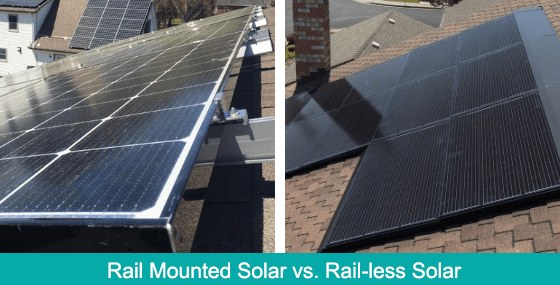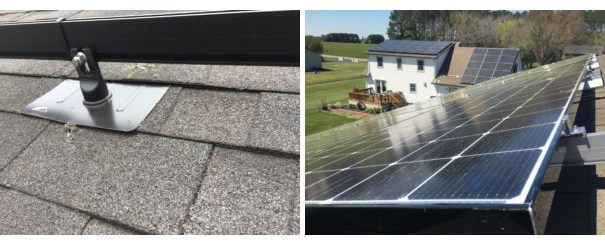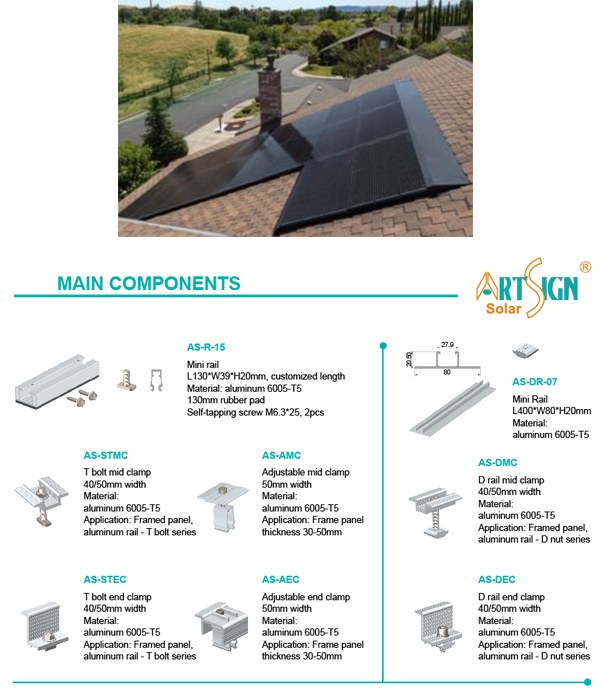
There are two main mounting variations for rooftop solar - rail mounted and rail-less; the most widely used method being the rail mount.
Art Sign compares rail mounted and rail-less racking solutions available for residential shingle rooftops and identifies the pros and cons of each.
Art Sign offer a variety of rail mounting solutions that allow us to customize our system designs to best meet customer’s aesthetic and financial needs. However, we realize rail mounted solar isn't for everyone. So take a look at the comparison below.
Similarities Between Solar Racking with Rails and Without Rails
How Both Systems Work
Standard Rail Mounted Solar:
This method uses a flashing to attach onto the existing rooftop. The flashing is similar to what would be used for a standard roof vent. An “L” foot or support component is then fastened to this flashing and holds the aluminum/steel rail 2-4 inches above the rooftop, upon which the solar panels are mounted.

The Pros for Standard Rail Mounting:
The Cons for Standard Rail Mounting:
This more of a low profile mounting method. Systems typically use multiple attachment points on the rooftop and attach to each panel individually, eliminating the need for rails.

The Pros of Rail-less Solar:
Sleeker, less noticeable design offered with flashing that helps blend the system in with the roof and keep rodents/weather out
Less weight on rooftop means it may be more compatible with older/less engineered buildings
Wires are contained beneath the array and hidden from view
The Cons of Rail-less Solar:
Limited to darker module types which are typically more expensive and not as highly rated in KW
Picking Between Rail Mounts and Rail-less Mounts, please contact us for more detail.
Email: sales@artsign.net.cn Whatsapp/ Wechat/ Skype: +86 180 3023 5875
Unit 301, No. 600 Guankou South Road, Jimei District, Xiamen, China
Tel : 0086 592 6266951 0
Whatsapp :+8618030235875
Email : sales@artsign.net.cn
Teams : Artsign Energy